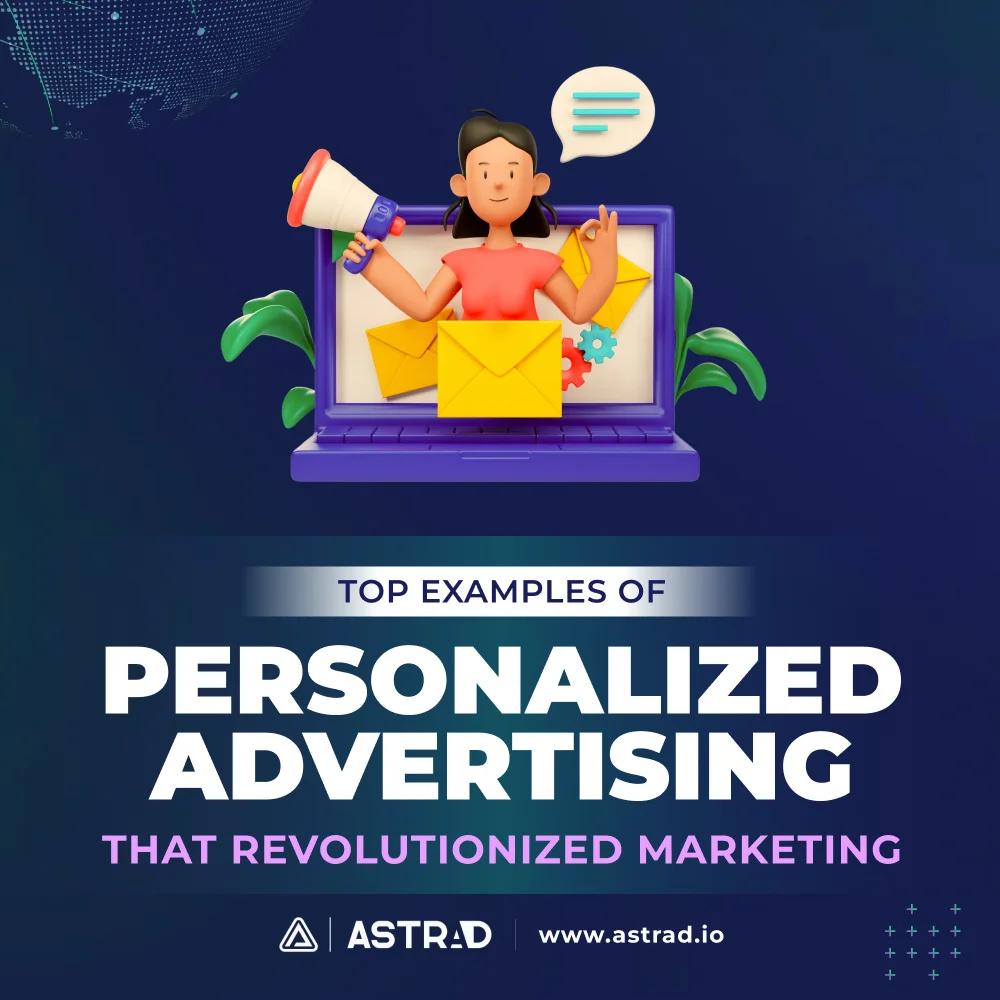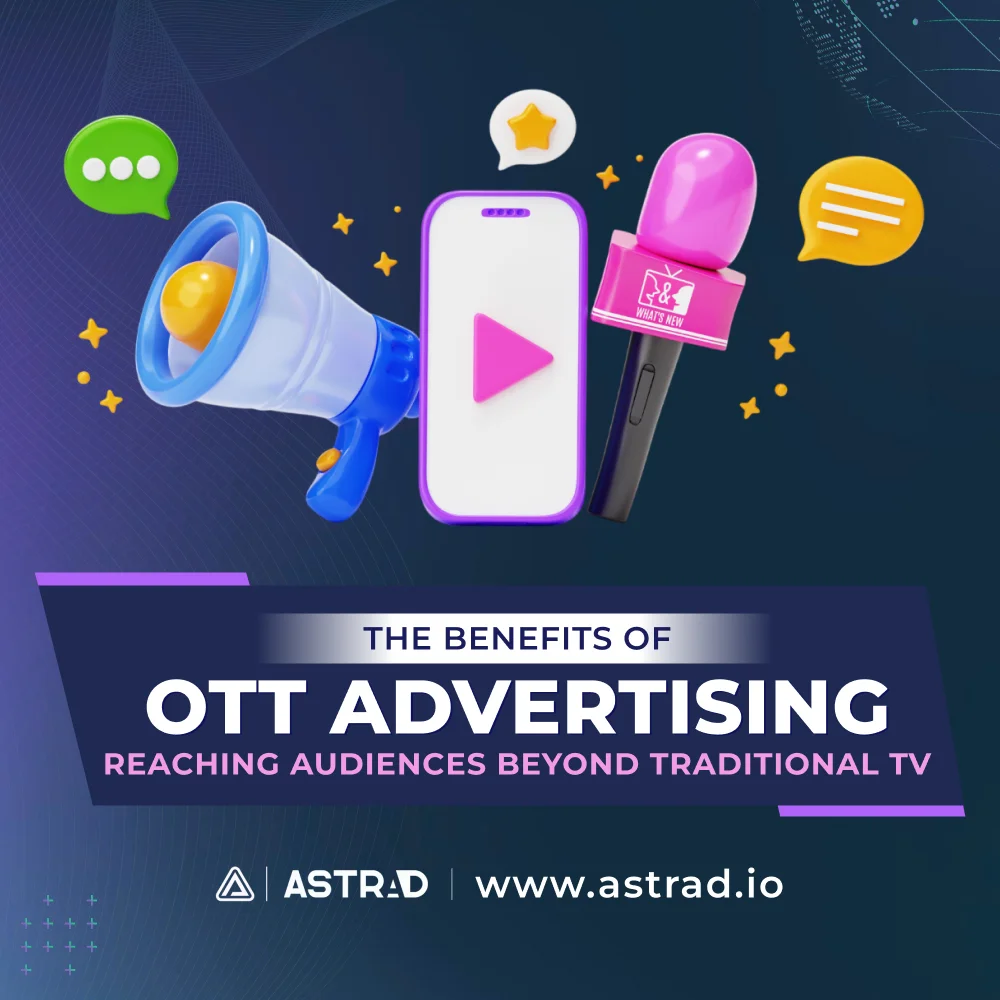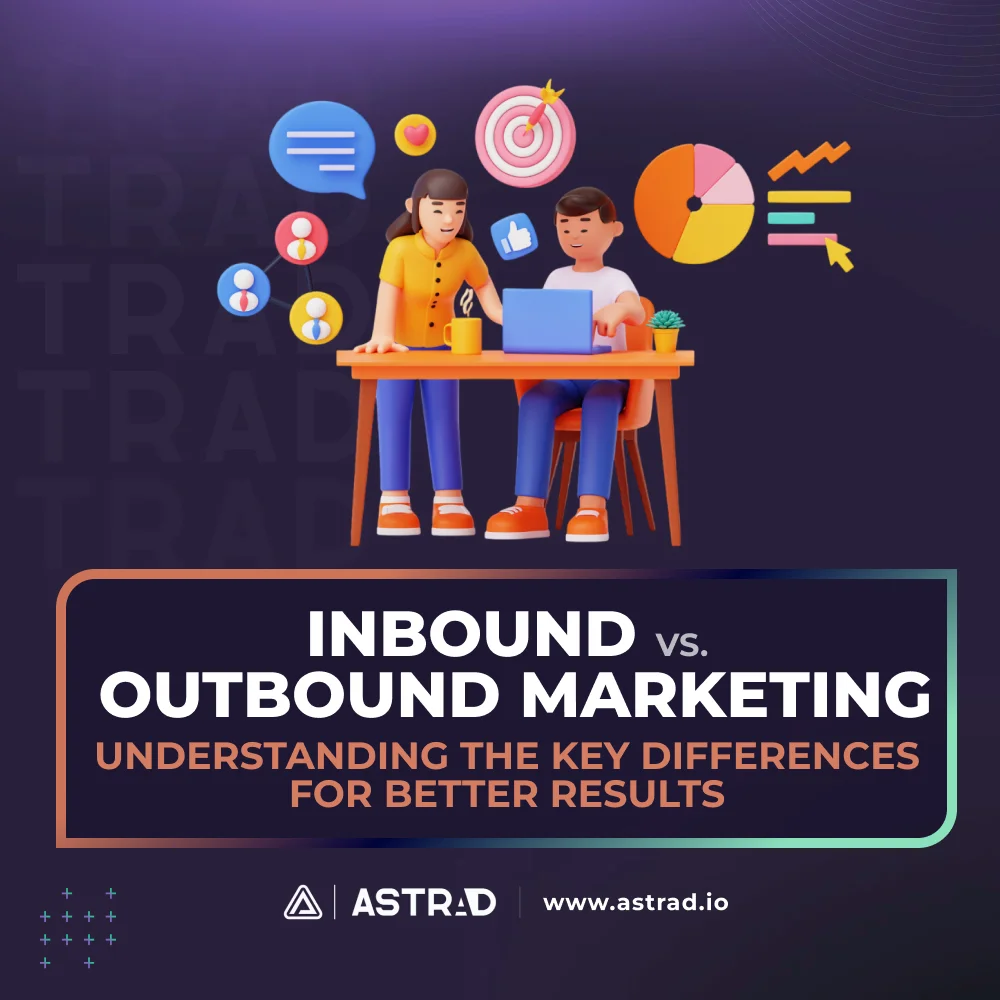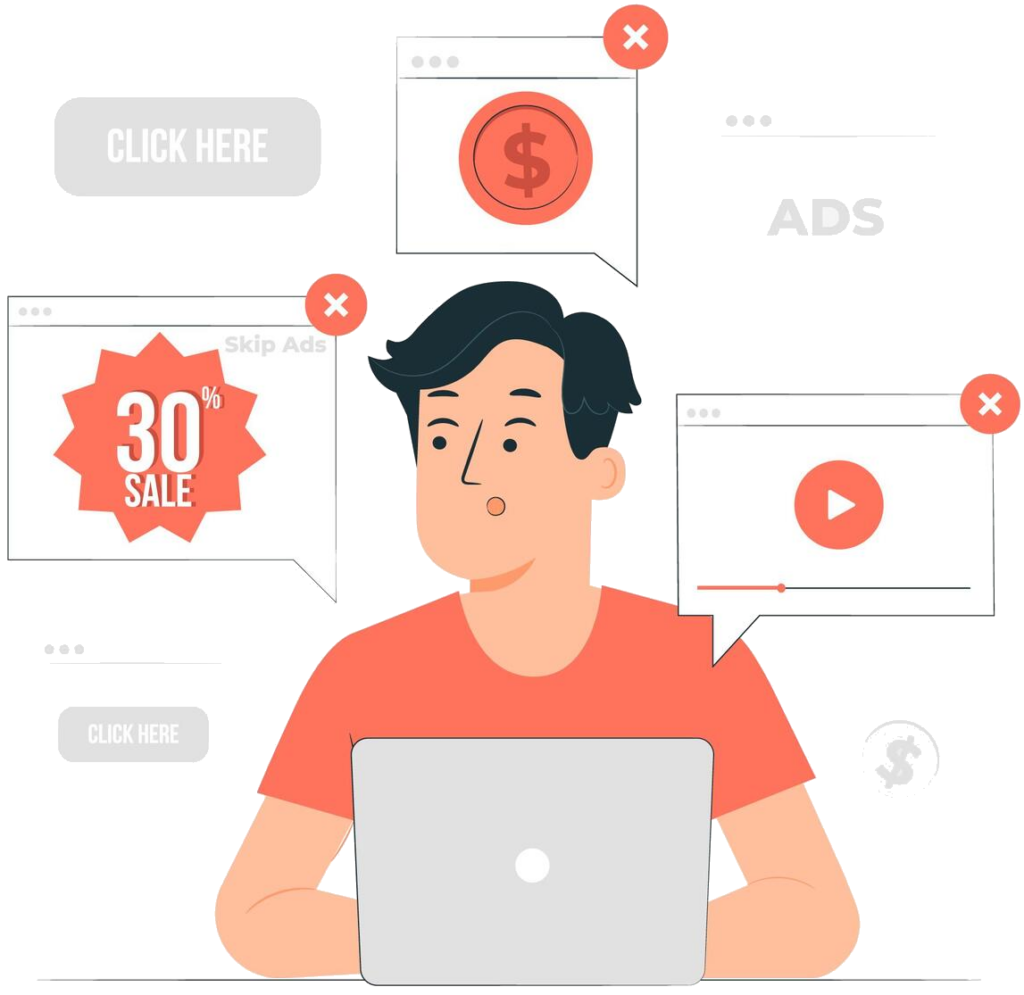Remember when TV commercials tried to sell dish soap to everyone, from teenagers to grandparents? Those days are long gone. Personalized advertising has completely flipped the script, creating marketing that feels less like advertising and more like a helpful friend who actually knows what you want.
Think about it – when was the last time you clicked on an ad that had nothing to do with your interests? Probably never. That’s because the smartest brands have figured out how to use your data (with your permission, of course) to show you stuff you actually care about.
The results speak for themselves: personalized emails deliver six times higher transaction rates than generic ones, and personalized calls-to-action convert 202% better than default versions.
But this shift goes way deeper than just better click-through rates. We’re talking about a complete transformation in how brands build relationships with people. The companies getting it right aren’t just selling products – they’re creating experiences that make customers feel understood, valued, and genuinely excited about what comes next.
Why Advertising Personalization Changed Everything
Gone are the days when marketers could just blast the same message to millions of people and hope something would stick. Advertising personalization has completely rewritten the rules by turning generic broadcasts into individual conversations.
The magic happens when brands stop thinking about demographics and start thinking about actual people. Instead of “women aged 25-34,” successful marketers now think about “Sarah, who loves yoga, drinks oat milk lattes, and always shops online after her kids go to bed.” That level of understanding changes everything.
The Psychology Behind Why We Love Personalized Ads
Here’s something interesting: when people see ads that reflect their actual interests and behaviors, their brains literally react differently. There’s a psychological principle at work where relevance creates connection, and connection builds trust.
Research shows that 81% of consumers appreciate brands that tailor their experience to their needs, while 70% of shoppers feel more valued when their experiences are personalized. That’s not just marketing fluff – that’s genuine human psychology in action.
The difference is emotional. Generic ads feel like interruptions. Personalized ads feel like recommendations from someone who gets you. When Netflix suggests a show based on your viewing history, it doesn’t feel like advertising – it feels like a friend who knows your taste in entertainment.
What makes personalized advertising so powerful:
- Relevance cuts through information overload and captures genuine attention
- Personal recognition makes customers feel valued rather than just targeted
- Behavioral insights enable perfect timing for maximum impact
- Individual experiences build long-term loyalty beyond single transactions
- Data-driven optimization continuously improves results and customer satisfaction
The Numbers Don't Lie About Personalization Success
The business case for personalization is absolutely staggering. According to Salesforce, personalized ads now yield three times the return on investment compared to traditional advertising. That’s not a marginal improvement – that’s a complete game-changer for marketing budgets.
Email marketing tells the story perfectly. Personalized emails generate 29% higher open rates and 41% higher click-through rates compared to generic messages. Even something as simple as putting someone’s name in the subject line increases open rates by 26%.
But the real magic happens at conversion time. Personalized product recommendations can increase conversion rates by up to 320%, while brands using customer segmentation strategies see a 760% increase in revenue. These numbers reflect something profound: when you show people exactly what they want, they buy it.
Game-Changing Personalized Advertising Examples That Redefined Marketing
The most brilliant personalized campaigns share a secret: they stopped trying to sell and started trying to help. These brands figured out how to use customer data to create genuine value, building relationships that last way beyond any single purchase.
Spotify Wrapped: When Your Data Becomes Your Story
Every December, millions of people eagerly wait for Spotify to tell them about themselves. Spotify Wrapped transforms boring listening data into a personal story that feels like getting a year-end report card for your music taste.
But here’s the genius part: Spotify isn’t selling anything with Wrapped. They’re not pushing premium subscriptions or promoting new features. They’re simply giving users something they genuinely love – insights about their own behavior wrapped up in beautiful, shareable graphics.
The emotional connection is pure gold. Your top songs become a soundtrack to your year. Your most-played artist feels like a personal relationship. Suddenly, Spotify isn’t just a music app – it’s the keeper of your musical memories and the curator of your personal soundtrack.
The social media explosion happens naturally. People don’t share Wrapped because Spotify asks them to. They share it because it tells their story in a way that feels both personal and universal. It’s data storytelling at its absolute finest.
Amazon's Mind-Reading Recommendation Engine
Amazon has basically turned shopping into a conversation where they already know what you’re going to say. Their recommendation system doesn’t just suggest products – it predicts what you need before you realize you need it.
The scary-accurate suggestions come from analyzing everything: what you bought, what you browsed, how long you looked at something, what time of day you shop, even what other people with similar tastes have purchased. It’s like having a personal shopping assistant who never forgets anything about your preferences.
The business impact is mind-blowing. Amazon’s recommendation engine drives an estimated 35% of its total sales. That’s billions of dollars in revenue generated simply by showing people the right products at the right time.
What makes it work so well is that it solves a real problem. Amazon has millions of products – trying to find what you want without help would be overwhelming. The recommendations turn an impossibly large store into a curated shopping experience tailored just for you.
Netflix's Secret Weapon: Personalized Advertising Through Thumbnails
Here’s something most people never notice: the thumbnail image you see for the same movie might be completely different from what your friend sees. Netflix creates multiple thumbnail options for every piece of content, then uses your viewing history to predict which image will make you most likely to click.
Love action movies? You might see a thumbnail highlighting the film’s most intense moment. Prefer romantic comedies? The same movie gets presented with its funniest or most heartwarming scene. It’s visual personalization that happens before you even realize you’re being marketed to.
The impact on viewing behavior is significant. Netflix reports that personalized thumbnails increase click-through rates and viewing time, helping subscribers discover content they actually want to watch. The system learns from every click, becoming smarter about what appeals to each individual viewer.
This represents the future of advertising: personalization so seamless and valuable that it enhances rather than interrupts the user experience. Netflix isn’t tricking people into watching things – they’re helping people find things they’ll genuinely enjoy.
Coca-Cola's "Share a Coke": Mass Personalization in Advertising Done Right
Coca-Cola pulled off something incredible with their “Share a Coke” campaign: they made millions of identical bottles feel personally meaningful by simply printing names on them. It was mass production meets individual recognition, and it worked like magic.
The emotional trigger was instant. Seeing your name on a Coca-Cola bottle created a moment of personal connection with a global brand. People started hunting for their names, buying bottles for friends, and treating a regular purchase like a personalized gift.
The social media explosion was organic and authentic. People shared photos of their personalized bottles not because Coca-Cola asked them to, but because finding their name felt special enough to document. The campaign generated millions of user-created posts without spending a dime on influencer partnerships.
The business results were spectacular: increased sales, enhanced brand engagement, and improved sentiment worldwide. The campaign proved that personalization doesn’t always require sophisticated technology – sometimes the simplest personal touch creates the biggest impact.
Nike's Customization Revolution: When Customers Become Designers
Nike transformed shopping from picking available options to creating personal expressions. Their customization platform lets customers design shoes and apparel with their own color choices, materials, and even personal details like names or meaningful dates.
The psychological hook is powerful: ownership. When you spend time designing something yourself, it becomes more than just a purchase – it becomes a reflection of your personality and creativity. Nike stops being just a shoe company and becomes a platform for personal expression.
The business benefits go way beyond individual sales. Customized products command premium prices, and customers who invest time in the design process develop stronger brand loyalty. When you’ve created something unique with a brand, you’re much less likely to switch to competitors.
The data insights are invaluable, too. Nike learns exactly what colors, styles, and features resonate with different customer segments, informing everything from future product development to inventory decisions.
Digital Platforms Mastering Personalized Advertising Examples
The digital revolution has created advertising opportunities that would have seemed like science fiction just a few years ago. These platforms combine massive amounts of user data with lightning-fast decision-making to deliver perfectly timed, highly relevant advertisements.
Facebook's Dynamic Ads: When Your Shopping Cart Follows You
Facebook’s dynamic advertising system does something that feels almost telepathic: it shows you ads for the exact products you were just looking at on other websites. Browse shoes on one site, and those same shoes might appear in your Facebook feed an hour later.
The technology tracks user behavior across websites and apps, automatically generating personalized ads featuring specific products people have shown interest in. It’s like having a persistent, polite salesperson who remembers everything you’ve ever looked at.
The effectiveness is dramatic because the timing and relevance are perfect. Instead of random product ads, users see items they’ve already considered purchasing. The ads feel helpful rather than intrusive – like gentle reminders about things they actually want.
The automation makes this possible at a massive scale. Retailers with thousands of products can create personalized ads for their entire inventory without manually designing each advertisement. The system handles everything from creative generation to audience targeting to performance optimization.
Starbucks' Email Magic: Loyalty Through Personal Connection
Starbucks has turned email marketing into an art form by using customer purchase history, location data, and preferences to create messages that feel personally crafted for each recipient. These aren’t mass emails with a name inserted – they’re genuinely customized communications.
The personalization goes deep: product recommendations based on past purchases, location-specific offers for nearby stores, timing optimized for individual customer habits, and rewards tailored to encourage specific behaviors like trying new products.
Weather integration adds another layer of relevance. Cold snaps trigger emails about hot beverages, while warm weather brings iced drink promotions. The offers feel timely and thoughtful rather than random.
The loyalty program integration creates a comprehensive personalized experience where customers see their point balances, progress toward rewards, and offers designed specifically for their purchasing patterns.
Adidas' Personal Trainer Approach: Fitness as Connection
Adidas created something brilliant with their personalized training app: they transformed marketing from product promotion into personal service. The app designs individualized workout programs based on fitness goals, activity levels, and user preferences.
The genius is in the value exchange. Instead of interrupting people with product ads, Adidas provides genuine fitness guidance that helps users achieve their goals. The brand becomes a trusted partner in personal health rather than just another company trying to sell athletic gear.
The data generated through app usage creates incredibly valuable insights about customer behavior, preferences, and motivations. Adidas learns what types of workouts people prefer, when they exercise, and what keeps them motivated. This information influences everything from product design to future marketing campaigns.
The emotional connection runs deep. Users who rely on Adidas for fitness guidance develop strong loyalty to the brand, viewing it as an essential part of their health and wellness routine rather than just a product provider.
Smart strategies that make personalization work:
- Focus on providing genuine value before asking for anything in return
- Use customer data to solve real problems rather than just push products
- Create consistent personalized experiences across all customer touchpoints
- Test continuously and optimize based on actual customer behavior and feedback
- Balance sophisticated personalization with respect for privacy and transparent data usage
How Personalization in Advertising Transformed Modern Marketing
These success stories show us something profound: the best personalized advertising doesn’t feel like advertising at all. It feels like helpful recommendations from someone who genuinely understands your needs, preferences, and goals.
The transformation goes way beyond better conversion rates or higher engagement metrics. We’re witnessing a fundamental shift in the relationship between businesses and their customers. Modern consumers don’t just expect personalization – they’ve come to see it as a basic level of respect and service.
The brands winning in this new world are those that view personalization as a service rather than just a targeting tactic. They use customer data to enhance experiences, anticipate needs, and create genuine moments of value. This approach builds the kind of trust and loyalty that lasts way beyond any individual campaign or promotion.
The future belongs to companies that can balance sophisticated technology with authentic human connection, using data to create more meaningful relationships rather than just more precise advertisements. In a world where everyone’s fighting for attention, the brands that truly understand their customers will always win.





